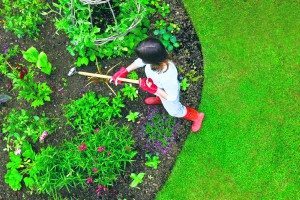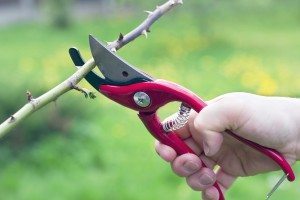 The key to a gorgeous garden is preparation. Now is the time to start the growing season off right. Each area, from the lawn to the vegetable garden, requires thought and advanced planning. Here’s a guide to get you going, with specific tips about what each element needs to help you achieve the lush garden of your dreams.
The key to a gorgeous garden is preparation. Now is the time to start the growing season off right. Each area, from the lawn to the vegetable garden, requires thought and advanced planning. Here’s a guide to get you going, with specific tips about what each element needs to help you achieve the lush garden of your dreams.
Lawn Care
Everyone wants the best lawn on the block. But, how do you make a thick, green, weed-free lawn a reality? Follow these steps:
Cleaning Up
In early spring, rake the lawn to remove leaves, twigs and other debris that accumulated during the winter.
Eliminating Crabgrass
If you had crabgrass last year, now is the time to prevent it from returning. This summer weed germinates from March to May, so when spring temperatures are between 50 and 55 degrees for three or more consecutive days—or when the forsythia bloom—that’s the time to apply crabgrass preventer. If you also plan to spread grass seed, you must select a crabgrass preventer that’s safe to use while seeding. This may seem complicated, but crabgrass preventer bags are clearly labeled and staffers at quality garden centers can help you choose the right one. Other less dense weeds, such as dandelions, are best controlled with a broad-leaf weed killer.
Seeding
Fill in any bare spots in the lawn now. But the best time for a major lawn renovation is mid-August through fall.
Mowing
Resume mowing when grass begins growing actively. During this time of year, mower blade height should be set to two-and-a-half to three inches.
A proper soil pH is very important to a healthy lawn. Grass absorbs fertilizers and other minor elements best when the pH is within optimal range, leading to a healthier lawn with fewer weeds and less fungus. Lawns prefer a pH range of 6.2 to 6.8 (6.5 is optimum). If the soil pH is below the desired range, lime is used to raise it. To determine the pH of your soil, you can either test it yourself with a store-bought pH test kit or bring it to a local garden center for testing. Some even offer this service for free. You can bring a half cup of dry soil to Hick’s Lawn & Garden Information Desk and they will test it for free and provide the results while you wait. If your lawn does need lime, now is a good time to apply it.
Trees, Shrubs and Flower Beds
In March, you can begin working on garden beds planted with trees, shrubs and perennials. A good time to start going green is St. Patrick’s Day (this week!), but any time the weather is nice get out there. Here’s where you should begin.
Cleaning Up
Rake leaves and other debris that has collected in the beds over the winter.
Pruning
Before the plants grow leaves and you can easily see what needs to be removed, prune dead and broken branches.
Fertilizing
This is an excellent time to fertilize trees and shrubs with a quality plant food.
Mulching
To not only give the yard a finished look, but prevent weeds from growing in your beds, spread one-and-a-half to two inches of mulch.
During early spring, figure out the location and size of your vegetable garden. Don’t wait until after you’ve purchased the plants to decide where the garden will go. That’s when many people discover they’ve purchased way too many plants. Measuring first will save time and money—and will provide sufficient room for the plants to produce more fruits and vegetables. Use the measurements when you shop, so you purchase the appropriate number for the space you have. Use your phone to take some pictures of the piece of paper with the measurements on it, as well as the area where you’re planning your vegetable garden—that way the information is with you no matter when you decide to shop.
When to Plant Vegetables
Mid-March is a terrific time for planting cool weather crops, such as lettuce, onions, carrots, kale, radishes and spinach. These veggies perform best in daytime temperatures of around 60 to 65 degrees Fahrenheit and will tolerate some light frost. They are harvested in late June through July, before the heat of summer.
By taking the time to prepare your yard and garden in March—and continuing to water, prune and fertilize throughout the season—you will be rewarded with a garden that is lush, green, flowering and beautiful.
Karen Musgrave is a Certified Nursery Landscape Professional (CNLP) and a marketing and education specialist at Hicks Nurseries, Inc., 100 Jericho Turnpike in Westbury. For more information, visit www.hicksnurseries.com or call 516-334-0066.




















